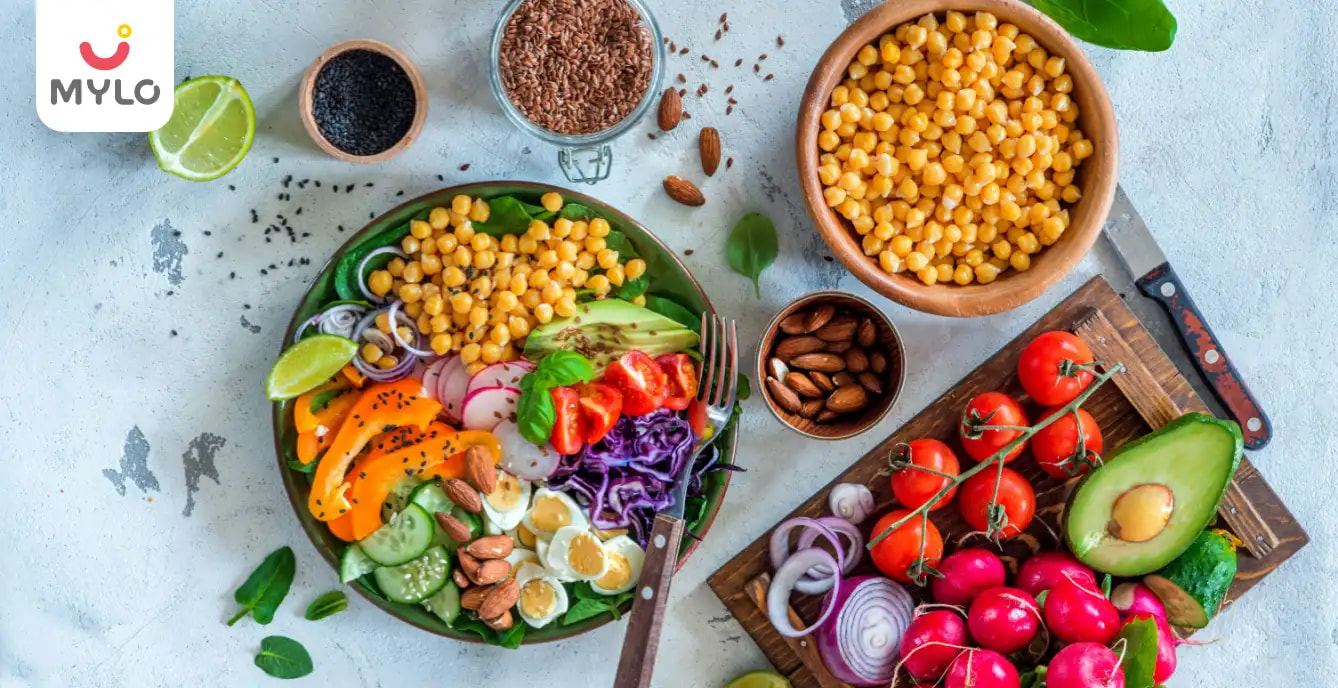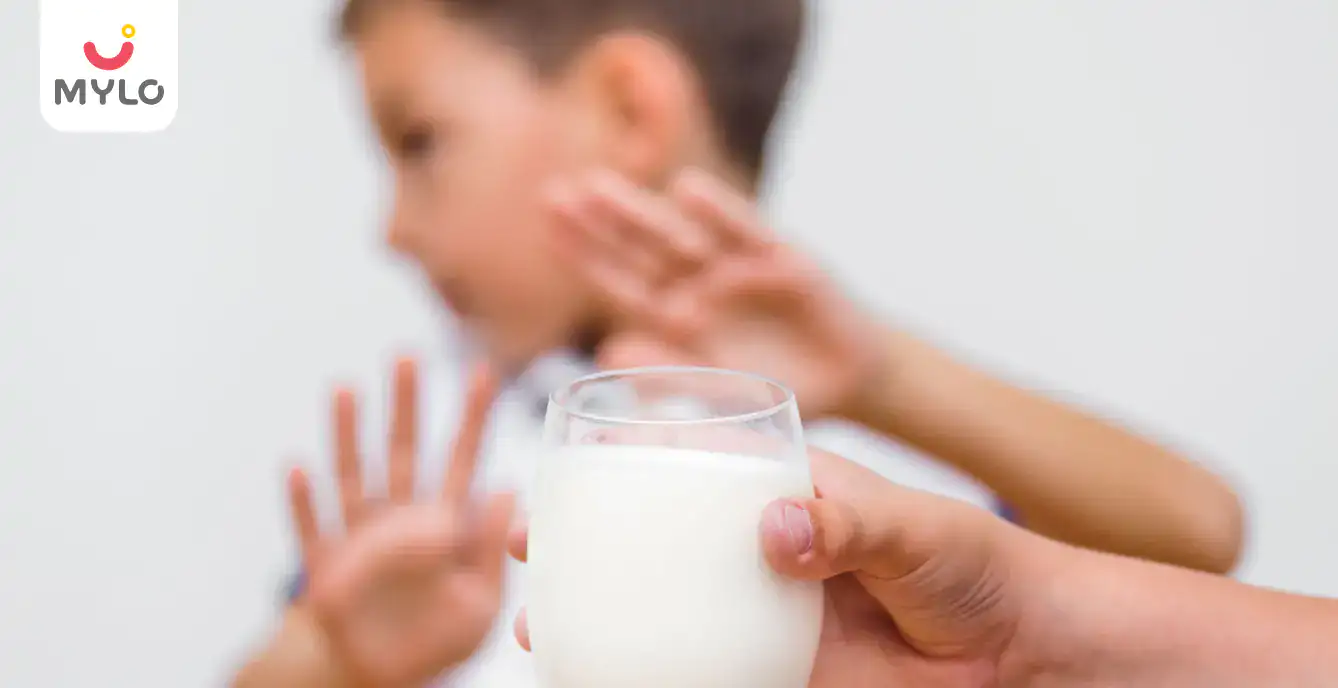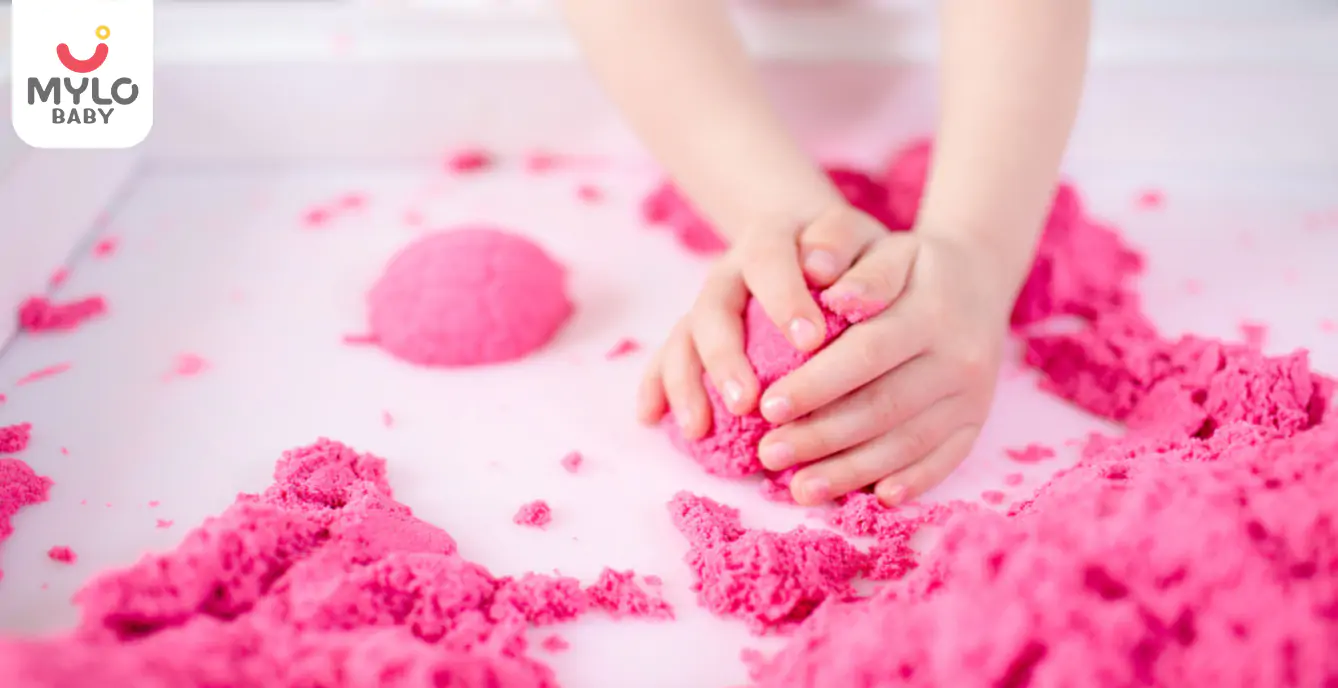Home

Indian Food to Increase Breast Milk: Everything You Need to Know
In this Article

Baby Care
Indian Food to Increase Breast Milk: Everything You Need to Know
Updated on 18 July 2023
Six months ago, Manvika embraced the delightful journey of motherhood, basking in the bliss of nurturing a new life. During the early days, she found herself inundated with an abundance of advice from various sources, each offering their own perspectives on what she should consume or avoid. Initially, this influx of guidance overwhelmed her, but as time progressed, she came to appreciate the profound wisdom imparted by her Dadi and Nani.
Their age-old wisdom proved to be efficacious, prompting Manvika to make a heartfelt commitment to spread the word and assist fellow new mothers by exploring Indian food to increase breast milk. The write-up discusses how to increase breast milk by Indian food, supplements to increase breast milk and much more
Indian Foods to Increase Breast Milk
Indian foods are often believed to help increase breast milk production due to their nutritional composition and potential lactogenic properties. While scientific evidence supporting these claims is limited, some ways in which Indian foods may be beneficial for lactation are the high nutritional value of Indian foods. Let’s discuss foods to increase breast milk after c section or normal delivery.
You may also like : Top 5 Foods A Breastfeeding Mother Should Eat
1. Methi Seeds
Methi seeds, also known as fenugreek seeds, are small, golden-colored seeds derived from the fenugreek plant (Trigonella foenum-graecum). Methi seeds are believed to contain compounds that mimic estrogen and can promote the production of prolactin, a hormone involved in milk production. Methi seeds can be consumed in various forms:
-
Soaked: Methi seeds can be soaked overnight in water and consumed on an empty stomach in the morning.
-
Sprouted: Methi seeds can be sprouted and added to salads or used as a garnish.
2. Chickpeas (Chhole)
Chickpeas, also known as chhole or garbanzo beans, are a nutritious legume commonly used in Indian cuisine. Chickpeas are an excellent source of plant-based protein. Consuming an adequate amount of protein is important during lactation as it supports tissue repair and growth, including breast tissue and milk production. Including chickpeas in various ways:
-
Adding cooked chickpeas to salads, curries, or soups.
-
Preparing chickpea-based dishes like chhole masala or hummus.
-
Incorporating chickpea flour (besan) into recipes for pancakes, crepes, or fritters.
3. Shatavari
Shatavari, also known as Asparagus racemosus, is the most popular ayurvedic medicine to increase breast milk. Shatavari is believed to have phytoestrogenic properties, which means it contains plant-based compounds that can mimic estrogen.
It is thought that Shatavari may help increase prolactin levels, a hormone involved in milk synthesis. Shatavari can be consumed in various forms like capsules/tablets or powder. Mylo Shatavari powder can be consumed during lactation phase to enhance milk supply and also for faster recovery after delivery.
4. Spinach (Palak)
Spinach, also known as palak, is a leafy green vegetable that is rich in nutrients and often considered a healthy food choice for lactating mothers. Spinach is packed with essential vitamins and minerals, including vitamin A, vitamin C, vitamin K, iron, calcium, and folate. These nutrients are important for both the mother's overall health and the nutritional support of breastfeeding.
Incorporating spinach into your diet during breastfeeding can be done in various ways:
-
Adding fresh spinach leaves to salads or sandwiches.
-
Cooking spinach and including it in soups, curries, or stir-fries.
-
Blending spinach into smoothies or juices for an added nutrient boost.
5. Fennel Seeds (Saunf)
Fennel seeds, also known as saunf, are commonly used in Indian cuisine and are believed to have potential lactogenic properties, meaning they help increase breast milk production. Fennel seeds can be consumed in various ways:
-
Many people chew fennel seeds directly after meals as a digestive aid and to enjoy their flavor.
-
Fennel seeds can be steeped in hot water to make a soothing and aromatic tea. This can be consumed warm or at room temperature.
6. Oats
Oats are a nutritious grain that is often recommended as a dietary addition for lactating mothers and are among the foods to increase breast milk after c section. Including oats in your diet can be done in various ways:
-
Oatmeal: Cook oats with water or milk and add your preferred toppings such as fruits, nuts, and seeds for a nourishing breakfast.
-
Oat-based snacks: Incorporate oats into homemade granola bars, cookies, or energy balls for a convenient and nutritious snack.
-
Smoothies: Blend oats into smoothies with fruits, yogurt, and milk for a nutrient-packed beverage.
You may also like : Colostrum or First Milk : A Complete Guide About Its Meaning, Benefits & Side Effects
7. Barley
Barley is a nutritious grain that can be beneficial for lactating mothers. While there is limited scientific research specifically linking barley to increased breast milk production, it offers various advantages for overall health and lactation support.
Including barley in your diet during breastfeeding can be done in various ways:
-
Barley soup: Prepare a hearty soup by cooking barley with vegetables and broth.
-
Barley porridge: Cook barley with milk or water to make a creamy porridge, and add your preferred toppings such as fruits and nuts.
8. Garlic
Garlic is a widely used ingredient in various cuisines and has been traditionally believed to have lactogenic properties, potentially supporting increased breast milk production. Including garlic in your diet during breastfeeding can be done in various ways:
-
Cooking with garlic: Add crushed or minced garlic to soups, stews, curries, stir-fries, and other cooked dishes for its distinct flavor and potential lactation benefits.
-
Garlic-infused oil: Make garlic-infused oil by heating garlic cloves in cooking oil and using it to flavor dishes.
9. Pulses
Pulses offer several nutritional benefits and can be included in a breastfeeding mother's diet for overall health and lactation support. Including pulses in your diet during breastfeeding can be done in various ways:
-
Lentil soups or stews: Cook lentils with vegetables and spices to prepare nourishing soups or stews.
-
Bean salads: Include beans, such as kidney beans or black beans, in salads for added protein and fiber.
10. Bottle Gourd (Lauki)
Bottle gourd or lauki has high water content, which can contribute to hydration. Staying well-hydrated is important for maintaining adequate milk production and overall well-being during breastfeeding. Including bottle gourd in your diet during breastfeeding can be done in various ways:
-
Lauki sabzi: Prepare a simple stir-fried dish with bottle gourd, spices, and other vegetables for a nutritious side dish.
-
Lauki soup: Make a comforting soup with bottle gourd, lentils, and spices for a nourishing meal.
11. Nuts- Almonds and Cashews
Almonds and cashews are nutrient-dense nuts that provide essential vitamins, minerals, and healthy fats. They are rich in protein, dietary fiber, vitamin E, magnesium, and calcium, among other nutrients. These nutrients contribute to overall health and can support lactation. Including almonds and cashews in your diet during breastfeeding can be done in various ways:
-
Snacking: Enjoy a handful of raw or roasted almonds and cashews as a nutritious snack.
-
Milkshakes or smoothies: Blend almonds or cashews with milk, fruits, and other ingredients to make a nourishing beverage.
12. Unripe Papaya
Unripe papaya, also known as green papaya, has been traditionally used in some cultures to help increase breast milk production. If you choose to consume unripe papaya while breastfeeding, it's recommended to:
-
Start with small amounts: Begin with a small portion of unripe papaya and gradually increase the quantity if there are no adverse effects.
-
Monitor your baby's reaction: Pay attention to your baby's digestion and overall well-being. If you notice any changes or concerns, it's best to discontinue consuming unripe papaya and consult with a healthcare professional.
13. Cinnamon (Dalchini)
Cinnamon is rich in antioxidants and has anti-inflammatory properties. These properties can contribute to overall health and well-being during breastfeeding. Including cinnamon in your diet during breastfeeding can be done in various ways:
-
Sprinkle on oatmeal: Add a dash of cinnamon to your oatmeal or other hot cereals for a delightful flavor boost.
-
Incorporate in recipes: Use cinnamon as a spice in baked goods, smoothies, and curries to infuse them with its distinct flavor.
14. Cumin Seeds (Jeera)
Cumin seeds, also known as jeera, are commonly used as a spice in Indian cuisine. While cumin seeds have been traditionally believed to have lactogenic properties and stimulate milk production. Including cumin seeds in your diet during breastfeeding can be done in various ways:
-
Cooking with cumin: Toast cumin seeds in a dry pan and then grind them into a powder. Use the powder as a spice in curries, soups, and other dishes.
-
Cumin tea: Boil water with cumin seeds, strain, and enjoy it as a warm beverage.
15. Drumsticks (Sahjan ki fali)
Drumsticks, also known as sahjan ki fali or moringa pods, are long, slender, green vegetables commonly used in Indian cuisine. Drumsticks have been traditionally believed to have lactogenic properties and stimulate breast milk production. Including drumsticks in your diet during breastfeeding can be done in various ways:
-
Drumstick soup: Make a flavorful soup by boiling drumsticks with other ingredients like vegetables or lentils.
-
Drumstick pickle: Enjoy drumsticks as a pickle, which can add a tangy and spicy element to your meals.
You may also like : Top 10 Super Foods Every Breastfeeding Mom Should Eat
FAQs
1. Which Fruits Help Increase Breast Milk?
Several fruits can be beneficial for lactating mothers and potentially support increased breast milk production such as papaya, blueberries, oranges, lemons, grapefruits, avocado, mango, watermelon, and kiwi.
2. Does Coconut Water Increase Milk Supply?
Yes, coconut water helps to increase milk supply as it is packed with essential nutrients and also staying adequately hydrated is one of the crucial aspects for maintaining adequate milk supply.
3. How Much Water Should I Drink a Day for Breastfeeding?
As a general guideline, breastfeeding mothers are often advised to aim for around 8 to 10 cups (64 to 80 ounces) of fluids per day, which can include water, herbal teas, and other hydrating beverages.
Final Thoughts
In conclusion, Indian food to increase breast milk ranges from nutrient-rich spices like fenugreek and cumin to lactogenic foods such as almonds, Shatavari, and green leafy vegetables. Furthermore, the consumption of pulses, lentils, and whole grains, ensures a well-balanced and nutritious meal plan that aids in promoting lactation. By embracing the wisdom of past generations and incorporating these dietary practices, new mothers can cultivate a nourishing environment for themselves and their little ones. You can also use supplements to increase breast milk in case the milk supply is still low.
References
1. Ali, Z., Bukari, M., Mwinisonaam, A., Abdul-Rahaman, A.-L., & Abizari, A.-R. (2020). Special foods and local herbs used to enhance breastmilk production in Ghana: rate of use and beliefs of efficacy.
2. Foong, S. C., Tan, M. L., Foong, W. C., Marasco, L. A., Ho, J. J., & Ong, J. H. (2020). Oral galactagogues (natural therapies or drugs) for increasing breast milk production in mothers of non-hospitalised term infants.



Written by
Madhavi Gupta
Dr. Madhavi Gupta is an accomplished Ayurvedic doctor specializing in Medical content writing with an experience of over 10 years.
Read MoreGet baby's diet chart, and growth tips

Related Articles
Related Questions
Hello frnds..still no pain...doctor said head fix nhi hua hai..bt vagina me pain hai aur back pain bhi... anyone having same issues??

Kon kon c chije aisi hai jo pregnancy mei gas acidity jalan karti hain... Koi btayega plz bcz mujhe aksar khane ke baad hi samagh aata hai ki is chij se gas acidity jalan ho gyi hai. Please share your knowledge

I am 13 week pregnancy. Anyone having Storione-xt tablet. It better to have morning or night ???

Hlo to be moms....i hv a query...in my 9.5 wk i feel body joint pain like in ankle, knee, wrist, shoulder, toes....pain intensity is high...i cnt sleep....what should i do pls help....cn i cosult my doc.

Influenza and boostrix injection kisiko laga hai kya 8 month pregnancy me and q lagta hai ye plz reply me

Related Topics
RECENTLY PUBLISHED ARTICLES
our most recent articles

Lactose Intolerance
Lactose Intolerance in Babies: A Parent’s Guide to Identifying and Managing it

Medical Procedures
TESA IVF: How This Procedure Can Help You Achieve Your Dream of Parenthood

Sensory Development
How Can You Encourage Sensory Play for Your Baby and What are Its Benefits?

IVF Pregnancy
After How Many Weeks IVF Pregnancy Is Safe: Understanding The Ideal Timeline

Exploring the Senses: 9 Incredible Benefits of Sensory Play for Your Child's Development

Childproofing
The Ultimate Guide to Childproofing Your Home
- Start Their Love for Reading Early: The Best Books for Baby's First Library
- CMPA (Cow's Milk Protein Allergy): Identifying Symptoms and Understanding Treatment
- Birth Control Options While Breastfeeding: Balancing Parenthood and Contraception
- Period During Breastfeeding What Every New Mother Should Know
- Role of Stories and Rhymes in Your Baby’s Brain Development
- Intracytoplasmic Sperm Injection (ICSI) How It Can Help Treat Male Infertility
- Baby Sleeping While Breastfeeding: Understanding the Causes and Solutions
- Lump in Breast During Breastfeeding How to Identify, Treat, and Prevent Lump Formation
- Understanding Down Syndrome: A Comprehensive Guide for Parents
- No Breast Milk After Delivery: What to Do & What are the Factors Responsible
- Lactation Failure: A Comprehensive Guide to Understanding the Causes and Solutions
- Breast Pain During Pregnancy: What to Expect and How to Find Relief
- Baby Spit Up: The Ultimate Guide to Causes, Prevention, and Management
- Unexplained Infertility: Breaking Down the Factors and Finding Solutions


AWARDS AND RECOGNITION

Mylo wins Forbes D2C Disruptor award

Mylo wins The Economic Times Promising Brands 2022
AS SEEN IN
















- Mylo Care: Effective and science-backed personal care and wellness solutions for a joyful you.
- Mylo Baby: Science-backed, gentle and effective personal care & hygiene range for your little one.
- Mylo Community: Trusted and empathetic community of 10mn+ parents and experts.
Product Categories
baby carrier | baby soap | baby wipes | stretch marks cream | baby cream | baby shampoo | baby massage oil | baby hair oil | stretch marks oil | baby body wash | baby powder | baby lotion | diaper rash cream | newborn diapers | teether | baby kajal | baby diapers | cloth diapers |








